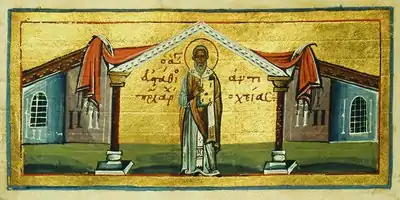| Millennium: | 1st millennium |
|---|---|
| Centuries: | |
| Decades: | |
| Years: |
| 337 by topic |
|---|
| Leaders |
| Categories |
|
| Gregorian calendar | 337 CCCXXXVII |
| Ab urbe condita | 1090 |
| Assyrian calendar | 5087 |
| Balinese saka calendar | 258–259 |
| Bengali calendar | −256 |
| Berber calendar | 1287 |
| Buddhist calendar | 881 |
| Burmese calendar | −301 |
| Byzantine calendar | 5845–5846 |
| Chinese calendar | 丙申年 (Fire Monkey) 3034 or 2827 — to — 丁酉年 (Fire Rooster) 3035 or 2828 |
| Coptic calendar | 53–54 |
| Discordian calendar | 1503 |
| Ethiopian calendar | 329–330 |
| Hebrew calendar | 4097–4098 |
| Hindu calendars | |
| - Vikram Samvat | 393–394 |
| - Shaka Samvat | 258–259 |
| - Kali Yuga | 3437–3438 |
| Holocene calendar | 10337 |
| Iranian calendar | 285 BP – 284 BP |
| Islamic calendar | 294 BH – 293 BH |
| Javanese calendar | 218–219 |
| Julian calendar | 337 CCCXXXVII |
| Korean calendar | 2670 |
| Minguo calendar | 1575 before ROC 民前1575年 |
| Nanakshahi calendar | −1131 |
| Seleucid era | 648/649 AG |
| Thai solar calendar | 879–880 |
| Tibetan calendar | 阳火猴年 (male Fire-Monkey) 463 or 82 or −690 — to — 阴火鸡年 (female Fire-Rooster) 464 or 83 or −689 |

Roman Empire (337) is divided between the territories of (west to east): Constantine II, Constans I, Dalmatius and Constantius II
Year 337 (CCCXXXVII) was a common year starting on Saturday (link will display the full calendar) of the Julian calendar. At the time, it was known as the Year of the Consulship of Felicianus and Titianus (or, less frequently, year 1090 Ab urbe condita). The denomination 337 for this year has been used since the early medieval period, when the Anno Domini calendar era became the prevalent method in Europe for naming years.
Events
By place
Roman Empire
- May 22 – Constantine the Great, first Christian Roman emperor of the Western Empire (312–324), and of the Roman Empire (324–337), dies in Achyron, near Nicomedia, at age 65, after he is baptized by Eusebius of Nicomedia.
- September – A number of descendants of Constantius Chlorus, and officials of the Roman Empire, are executed for a purge against the sons of Constantine I.
- September 9 – Constantine II, Constantius II, and Constans succeed their father Constantine I as co-emperors. The Roman Empire is divided between the three Augusti (see map).
Persia
China
- Murong Huang claims the title of Prince of Yan, effectively beginning the kingdom of Former Yan.
By topic
Religion
- February 6 – A 4-month papal vacancy ends; Pope Julius I succeeds Pope Mark, as the 35th pope.
- June 17 – Constantius II announces the restoration of Athanasius, as Patriarch of Alexandria.
- Paul I becomes Patriarch of Constantinople.
- Christianity is declared an official religion in Caucasian Iberia, marking the rise of Christianity in Georgia.
Births
- Faxian, Chinese Buddhist monk, traveler (approximate date)
- Fú Jiān, emperor of the Chinese Di state Former Qin (d. 385)
- Lü Guang, founding emperor of the Di state Later Liang (d. 400)
- Zenobius of Florence, Italian bishop and wonderworker (d. 417)
Deaths

Saint Eustathius of Antioch

Emperor and Saint Constantine the Great
- January 13 – Leontius of Caesarea, Roman Catholic bishop and saint
- February 21 – Eustathius the Great, patriarch of Antioch (approximate date)
- May 22 – Constantine the Great, emperor of the Roman Empire, Orthodox priest and saint (b. 272)
- May 27 – Flavius Dalmatius, father of Dalmatius and Hannibalianus (executed)
- August 30 – Alexander of Constantinople, bishop of Byzantium (approximate date)
- September 11 – Julius Constantius, son of Constantius Chlorus (executed)
- September 24 – Hannibalianus, king of the Pontus and nephew of Constantine I (executed)
- September 27 – Dalmatius, Caesar and nephew of Constantine I (executed)
References
This article is issued from Wikipedia. The text is licensed under Creative Commons - Attribution - Sharealike. Additional terms may apply for the media files.